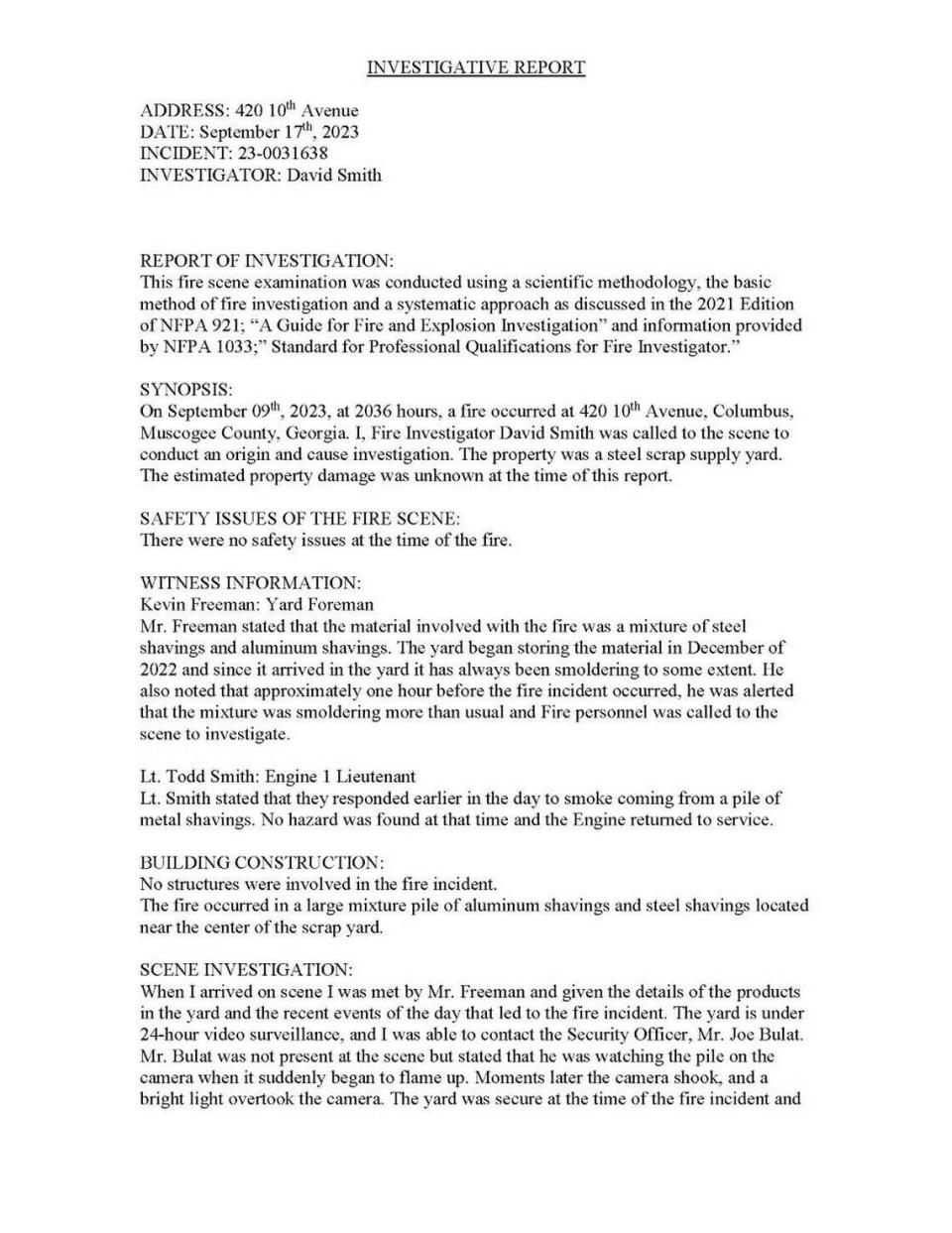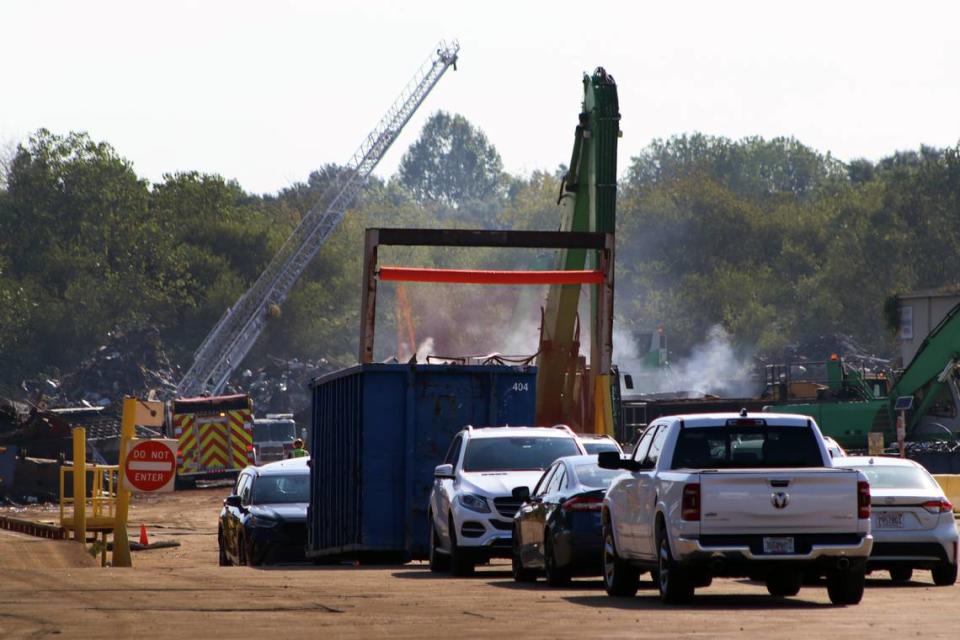The Radius Recycling metal scrapyard explosion & fire was an accident waiting to happen
The Radius Recycling metal scrap yard explosion last September that rattled downtown Columbus was a ticking time bomb.
Piles of scrap metal smoldered for 10 months before igniting and exploding, creating a massive fire and a trail of black smoke full of heavy metals that sifted stories high into the night sky.
According to the investigative report obtained by the Ledger-Enquirer through an open records request, the fire department was alerted by the Radius Recycling yard foreman, Kevin Freeman, earlier that day.
The pile of mixed metals was “smoldering more than usual,” Freeman told the lead fire investigator, David Smith of Columbus Fire Department.
Freeman told David Smith that the combined aluminum and steel shavings mixed metal pile had been “always been smoldering to some extent since December 2022”.
Fire personnel [Engine 1, Lieutenant Todd Smith] were called to the scene to investigate. However, Lieutenant Smith and the Engine crew left Radius Recycling after not detecting hazards or anything out of the ordinary.
“Engine 1 was told that those were fairly normal conditions and that everything was stable,” Fire Marshal, Division Chief, and Public Affairs Officer John Shull of Columbus Department of Fire and EMS said.
Hours later, a security officer watched on camera (remote from the Radius Recycling location) as the same pile that was smoldering earlier that day suddenly caught fire, followed by the camera shaking before a bright flash of light.
David Smith ruled the fire “accidental in nature”.
“The fire occurred due to a rapid oxidation process between the two different types of elements stored together,” David Smith wrote in the report. “Combining steel shavings, dust, aluminum shavings creates a hazardous condition where the oxidation rate is accelerated. This process is called Thermite.”

The company was not in violation nor fined, according to Shull.
But the report, the only one issued on the fire, leaves several unanswered questions: why was the smoldering pile not deemed hazardous from the first visit earlier that day and why was it status quo for the steel and aluminum mixture to sit smoldering for 10 months?
Freeman did not respond to multiple requests for comment from the Ledger-Enquirer. Only the Radius Recycling Public Affairs Officer, Eric Potashner, would respond to an inquiry.
Potashner emailed the Ledger-Enquirer a list of Radius Recycling safety protocols but did not answer questions as to why Radius Recycling allowed for an environment where “smoldering always exists to some extent”.
The company protocols include:
A comprehensive load-check process for inbound materials.
Best practices for pile management which include appropriate space, height, and arrangement of the feedstock piles.
Round-the-clock onsite thermal sensor cameras that continuously survey the facility, enabling swift detection of heat anomalies that might suggest a fire risk.
Onsite training with local first responders to educate employees about operations and proactively collaborate on effective fire prevention strategies.
It is not clear if these protocols by Radius Recycling have always been in place or if they were created after the incident on September 17, 2023.

Shull said Columbus Fire met with Radius Recycling personnel sometime after the fire and the company would have new fire mitigation techniques.
“They are going to make sure it wouldn’t happen again,” Shull said. Radius recycling did not give more detail as to what actions would be taken other than the protocols listed in the email.
The large fire required the use of AFFF, fire suppression foam, that has forever chemicals (PFAS). PFAS are known toxins that never exit the environment or human body and are known to cause cancer. More details about this can be found in the article published in October by the L-E and this video explainer.
The Columbus airport (CSG) vehicle and Fort Moore’s vehicle applied a combined 550 gallons of AFFF foam on the fire. The toxic white foam covered the grounds at Radius Recycling, which can be seen from this drone footage.
Based in Portland, Oregon, Radius Recycling is a publicly traded company that has 54 yards that conduct metals recycling, auto parts shredding, and steel manufacturing. Georgia has the most metals recycling yards with nine throughout the state, while California has over a dozen auto parts yards.
Radius Recycling rebranded from Schnitzer Steel years ago, and has a history of incidents that results in air and water pollution.
On Wednesday, Baykeeper, a watchdog nonprofit in the San Francisco Bay Area sued Radius Recycling for polluting the bay waters, violating the Clean Water Act. The company has an auto-shredding operation in Oakland and three other satellite areas in the Bay Area.
“...together with the effective intervention of local first responders the fire was extinguished without injury or material property damage,” Potashner sent in an email. “ Radius Recycling fully cooperated with the fire department and related authorities in their investigation We continue to operate our facility in conformity with best practices and applicable fire code requirements.”

